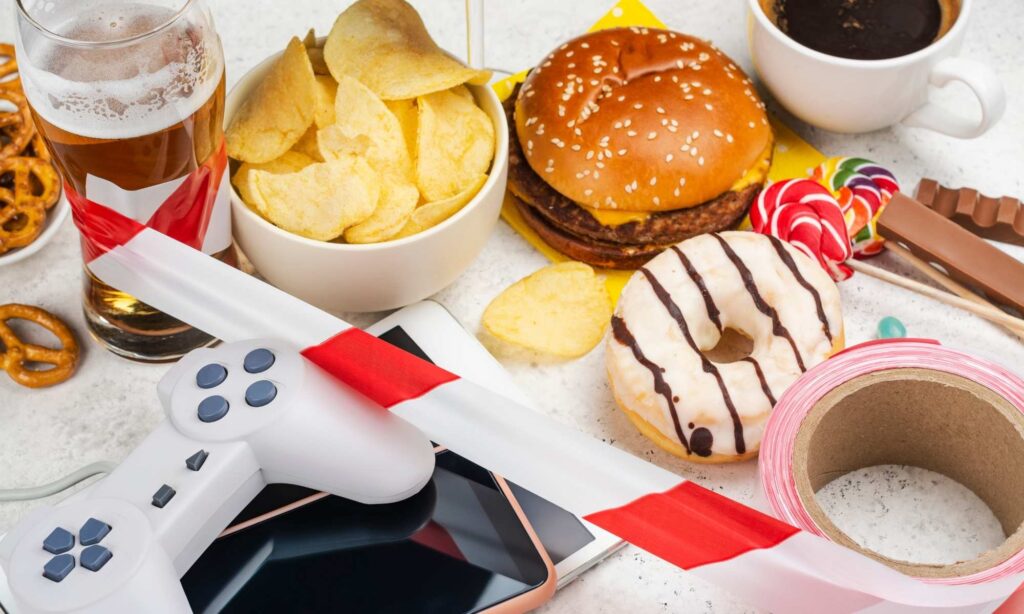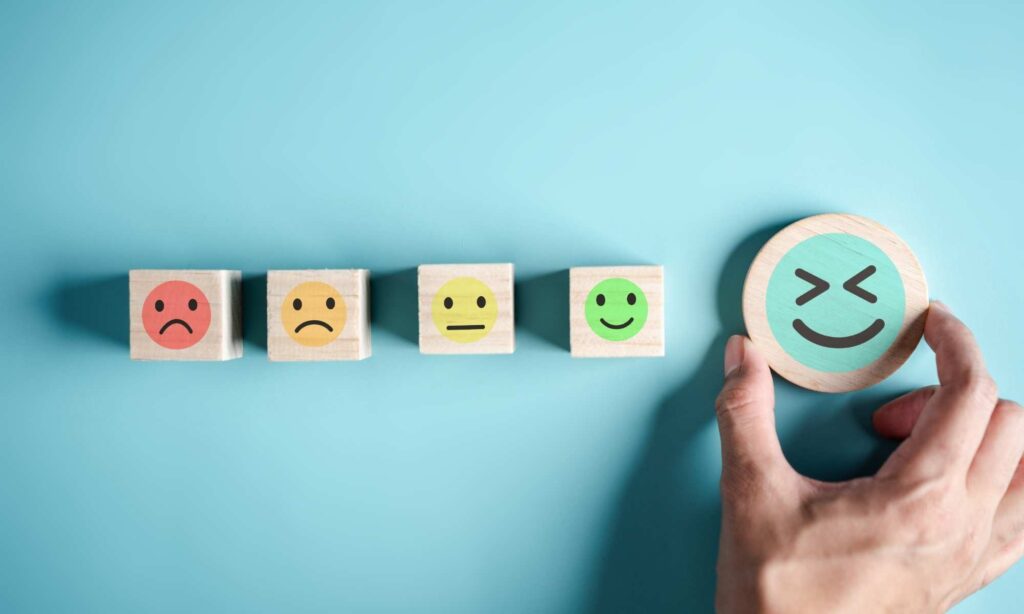Dopamine Detox: How to Reset Your Brain and Reclaim Focus

Table of Contents
Do you find yourself checking your phone every few minutes? Struggling to finish a simple task without getting distracted? Feeling unmotivated even when your to-do list is full of important things?
You’re not lazy or broken – you’re likely experiencing dopamine overload. In a world full of instant gratification, your brain is constantly bombarded with quick hits of stimulation. The solution? A powerful and simple practice called the dopamine detox.
In this article, you’ll learn what a dopamine detox is, how it works, why it’s so effective – and how to use tools like journaling, habit tracking, and intentional routines to reset your brain and regain clarity.
What Is Dopamine and Why Does It Matter?
Dopamine is a neurotransmitter that plays a key role in motivation, pleasure, and focus. Every time you get a notification, eat a sweet treat, or watch an exciting video, your brain rewards you with a small hit of dopamine. It feels good – and your brain wants more.
But the more stimulation we seek, the more we desensitise our brains. That’s when dopamine dysregulation sets in. Everyday tasks – like working, reading, or cleaning – begin to feel unbearably boring because your brain is addicted to the high.

Where Does Dopamine Come From?
Dopamine is released in response to pleasurable or rewarding activities – and in our modern world, that can happen constantly. Some activities cause small dopamine spikes (like enjoying a good meal), while others create intense, frequent hits that can overwhelm your brain over time.
Here are common high-dopamine activities many people engage in daily:
- Scrolling social media (Instagram, TikTok, Twitter, Snapchat, YouTube etc.)
- Eating sugary or highly processed foods
- Playing video games
- Binge-watching Netflix or YouTube
- Getting notifications, likes, and messages
- Online shopping
- Using alcohol or recreational drugs
- Watching pornography
- Constantly listening to stimulating music or podcasts
- Chasing external validation (likes, praise, achievements)
These activities aren’t “bad” in moderation – but when done excessively, they flood your brain with dopamine and make slower, more meaningful tasks (like reading, studying, or self-reflection) feel boring in comparison.
Signs You Might Need a Dopamine Detox
I’m sure, after reading the above list, you’ll already know that you might be affected. Millennials like me will remember a time where everything was still fine – in a galaxy far, far away where we didn’t have constant access to the internet, were out more often, interacted with people in person, did our shopping offline and the only online games we got addicted to were Tetris and Snake.
- You feel bored unless you’re constantly entertained
- You multitask excessively and find it hard to focus
- You procrastinate often, even on things that matter
- You scroll through your phone for hours without realising it
- You feel overwhelmed but can’t stop distracting yourself
- You struggle to enjoy slow or quiet activities
- You experience frequent anxiety or mood swings
- You feel irritated or aggressive for no clear reason
If any of these sound familiar, you might benefit from a dopamine detox.
What Is a Dopamine Detox?
A dopamine detox (also called a dopamine fast) is the intentional act of reducing high-stimulation activities for a period of time so your brain can reset. It’s not about eliminating dopamine altogether – that’s not possible or healthy – but rather creating space for your brain to find joy in simple, meaningful things again.
The Goal:
To stop overstimulating your brain and retrain it to enjoy low-dopamine, productive activities – like reading, writing, meditating, exercising, or planning your week.

How Does a Dopamine Detox Work?
When you constantly chase quick rewards, your brain’s baseline for pleasure increases. Over time, your subconscious mind starts associating dopamine with shortcuts: social media, sugar, streaming, etc. This is why it’s so hard to focus on things that require effort or patience.
A dopamine detox interrupts this cycle. By removing or limiting overstimulating inputs, you give your subconscious mind a break – and allow it to recalibrate. This makes it easier to focus, find joy in slower tasks, and stay consistent with habits that truly support your well-being.
How to Do a Dopamine Detox (Without Going Extreme)
You don’t need to move to a cabin in the woods. A dopamine detox can be flexible and realistic. Here are three levels to choose from:
1. Mini Detox (1–2 hours)
Perfect for beginners or busy days. Set aside 1–2 hours to:
- Turn off all screens
- Avoid snacking or caffeine
- Do a low-dopamine activity like journaling, stretching, or sitting in silence
Use this time to simply be – no stimulation, no pressure.
2. Half-Day Detox
Set aside a morning or afternoon for:
- No phone or internet
- No music, podcasts, or background noise
- Simple meals only (no sugar or junk food)
- Quiet activities like walking, drawing, or reading
- Journaling or planning your week
💡 Use your planner to map out your detox window and set intentions.
3. Full-Day Reset
This is a deeper cleanse for your brain. For 12–24 hours:
- Stay offline completely
- Eat nourishing, unprocessed food
- Avoid media, multitasking, and passive consumption
- Focus on mindful tasks like cleaning, journaling, reflecting, and being in nature
🖋 Journal your thoughts and observations throughout the day. You’ll be amazed at what surfaces when the noise fades.
What to Expect During a Dopamine Detox
- At first, you might feel bored, restless, or even a little anxious. That’s normal. It’s your brain looking for its usual fix.
- After a few hours, you’ll start to experience mental clarity, calm, and maybe even creativity.
- The more often you do it, the easier it becomes – and the more your brain starts to value deep focus and simplicity.

How Journaling & Planning Supercharge a Dopamine Detox
A detox alone is helpful. But pairing it with self-reflection tools like journaling and habit tracking can take the results to a whole new level.
Here’s how:
Journaling:
- Helps process emotions instead of avoiding them
- Brings awareness to unconscious habits and patterns
- Encourages gratitude and presence
💡 Use our Poserlane journals, which include guided prompts and space for freewriting during your detox. You need extra motivation? Use our Ruled Inspirational Notebook!
Habit Tracking:
- Builds momentum through small daily wins
- Reinforces healthy behaviours (like less screen time or more sleep)
- Gives you a visual overview of your progress over time
💡 Our Undated Daily Planner come with a weekly habit tracker to help you stay consistent and motivated without needing extra apps.
Affirmations & Reflection:
During your detox, use simple affirmations to reinforce new neural pathways in the subconscious mind. This helps replace old patterns with empowering beliefs.
Examples:
- “I enjoy the calm of the present moment.”
- “I choose to focus on what truly matters.”
- “I am in control of my time and attention.”
If you’d like to know more about Affirmations – which are an incredibly powerful tool – check out this article. There’s a reason I included affirmations in my planners – they really work! 😊

Life After Dopamine Detox: What Changes?
After even a short detox, many people report:
- Improved focus and mental clarity
- Less phone dependency
- More motivation for creative or meaningful tasks
- Increased patience and emotional stability
- More joy in simple pleasures (reading, walking, journaling)
Over time, you’ll naturally crave low-stimulation, high-reward activities instead of quick dopamine hits. That’s real, lasting transformation.
Book Recommendations
Since I’m a big fan of self-help books and someone who loves to learn in depth about a topic, I can’t leave you here without recommending some books on the topic!
A no-nonsense guide to regaining control over your focus. Meurisse lays out simple, actionable steps to cut distractions and rewire your brain for deep work and discipline.
Dopamine Nation: Finding Balance in the Age of Indulgence, by Dr. Anna Lembke
Blending neuroscience and real-life stories, this book explores how modern pleasures hijack our reward system. Lembke offers powerful insights on resetting dopamine for a more balanced, fulfilling life.
This brain-chemistry breakdown shows how to naturally boost your “happy chemicals.” Breuning’s techniques help you form healthier habits and understand the biology behind motivation and joy.
Disclaimer: As an Amazon Associate I earn from qualifying purchases.
Final Thoughts: Small Changes Create Big Results
A dopamine detox isn’t about being perfect. It’s about reclaiming your attention, your habits, and your peace of mind – one moment at a time.
Whether you start with an hour or a full day, the most important thing is consistency. Pair your detoxes with supportive tools like journaling, planning, and habit tracking, and you’ll begin to feel more grounded, focused, and aligned with the life you actually want to live.
✨ Ready to reset? Explore our journals and planners designed to support your dopamine detox journey – with built-in affirmations, habit trackers, and daily reflection space to help you stay clear, calm, and in control.







